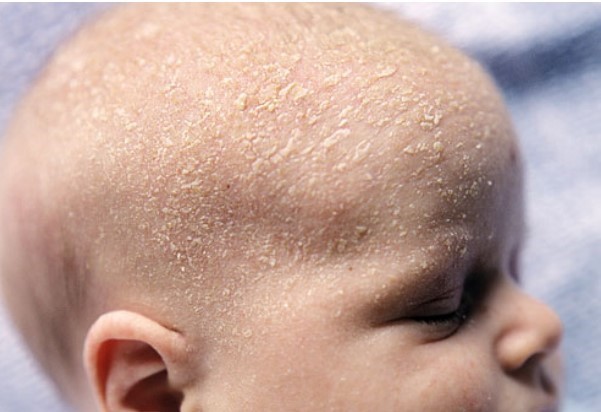Newborn’s skin is prone to rashes, but most of these rashes are harmless and will go away on their own.
How can we identify skin rashes, and when do you seek medical help?
- Neonatal acne: is sometimes thought to be caused by exposure in the womb to maternal hormones. It results in tiny red or white bumps or pimples. Avoid popping them as it can cause scarring! In almost all cases, the acne resolves on its own without treatment.

- Milia: Milia are tiny white bumps that appear across a baby's nose, chin, or cheeks. Milia are common in newborns but can occur at any age. No treatment is needed because they usually disappear on their own in a few weeks or months.

- Cradle cap: often shows up at 1-2 months of age. Greasy, yellowish crusts appear on the scalp and may include a red, irritating rash on the face, behind the ears, on the neck, and even in the armpits. Your doctor will tell you how to treat this common condition best, depending on your baby's symptoms.

- Eczema: Red, itchy patches on the skin, often seen on the baby's chest, arms, legs, face, elbows, and behind the knees. The leading cause is dry, sensitive skin and sometimes allergies. Eczema is itchy and can irritate your newborn, so it’s better to seek medical help for a better diagnosis and treatment.

- Candidiasis: a fungal infection, can show up in different ways on your baby. On the tongue, it is called thrush and looks like dried milk. In the diaper area, candidiasis looks like an intense red rash, often with smaller bumps around the edges. A fungal infection loves moist, dark areas, so you'll find redness due to it in the thighs’ creases. Candidiasis can be painful and irritating to your newborn, and your doctor should treat it.
When to seek medical help?
When you notice any rash associated with other symptoms, such as:
- Fever
- Poor feeding
- Lethargy
- Cough



